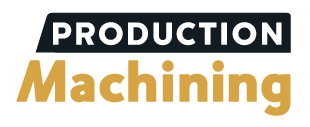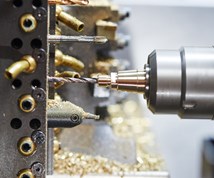What's Our Business?
We’ve heard it ad nauseam: Manufacturing is changing. Well, that’s a big Duh! I think it’s a safe bet that most of us understand change is happening. How to deal with that change is really the question.
#basics
We’ve heard it ad nauseam: Manufacturing is changing. Well, that’s a big Duh! I think it’s a safe bet that most of us understand change is happening. How to deal with that change is really the question.
At PMPA’s latest management update conference, I listened to Dr. Kenneth Preiss of the Enterprise Systems Center at Lehigh University discuss this topic for 2 days. He presented some interesting—and I think important—thoughts about manufacturing’s changing role, some of which I’d like to share.
Featured Content
The first question to ask is “what is the nature of my business’s relationship with my customers?” For many years a sufficient answer to this question was “I make good parts for my customer at a fair price.” However, if that’s what we think is the current business relationship between our shops and customers, Dr. Preiss admonishes us to think again.
One of the most fundamental changes in manufacturing is a shift in the commercial value of explicit knowledge to tacit knowledge. Dr. Preiss defines explicit knowledge as things that can be written down such as prints or computer files. A physical product (such as parts) is an expression of explicit knowledge. Think of it as manufacturing know-how. Tacit knowledge is what exists in people’s heads and in the social fabric of a company. It involves cultural compatibility and problem solving capability.
The problem with relying too heavily or exclusively on explicit knowledge is that it’s available to everyone. The democratization of manufacturing technology has made the explicit knowledge of part making virtually universal. And, as we all know too well, increasingly there are foreign economies where just making parts is more competitive than it is here.
It is in tacit knowledge that a competitive advantage for domestic manufacturers resides. The idea is to change a shop’s thinking from that of supplying a customer with parts to becoming involved in the customer’s processes. This requires learning more about where you fit into the customer’s needs structure.
If you simply supply a part to your customers, it’s as easy for them to buy parts overseas as it is for them to buy parts from you. Part are parts. Instead, consider applying your tacit knowledge to help a customer use the parts you make as part of a process solution that solves the customer’s problems. This takes advantage of the cultural compatibility between you and the customer and is impossible to duplicate with explicit knowledge alone.
The central theme of Dr. Preiss’ discussion was to change the thinking of manufacturers from considering themselves suppliers to making themselves virtual partners in the customer’s enterprise. In general, suppliers are interchangeable. If a shop is simply a supplier, it is in constant jeopardy of being underbid or replaced by another supplier.
If the shop can change its relationship from just a supplier of parts to a profit-making problem solver for the customer, that’s a much more secure position. The parts become a platform from which to launch a more service-oriented relationship with the customer.
Now that’s not to say that a shop should replace its manufacturing expertise. It’s the ability to make parts that is the foundation of a shop/customer relationship. What’s being suggested here is to use explicit manufacturing capability where it’s appropriate and enhance it with tacit knowledge when that’s appropriate. It’s simply another arrow in your quiver.
But that’s enough about the theory of tacit and explicit knowledge. Check out the first page in the PMPA section of this issue (page 15), and read about Prince Industries. This company is a real world example of how to do what Dr. Preiss is talking about without losing the manufacturing platform that makes it possible.
RELATED CONTENT
-
Understanding CNC Collet Chucks
Workholding for turning is usually fairly basic: The selection comes down to chucks or collets. This article looks at when to consider the collet chuck and what kind might be best for a given application.
-
Important Machining Factors of Carbon Steels
Learn the factors that contribute to carbon steels and their machinability as well as the 1214 steels, 1215 steels and 1018 steels, other grades, and more.
-
5 Grinding Considerations for Improving Surface Finish
Improving surface finish can be done by making adjustments to one or more of these points: operational parameters, wheel dressing, grit size, coolant delivery and machine condition.






